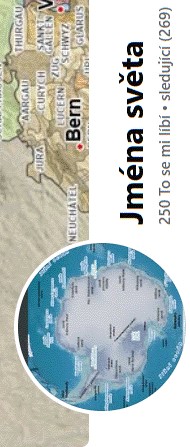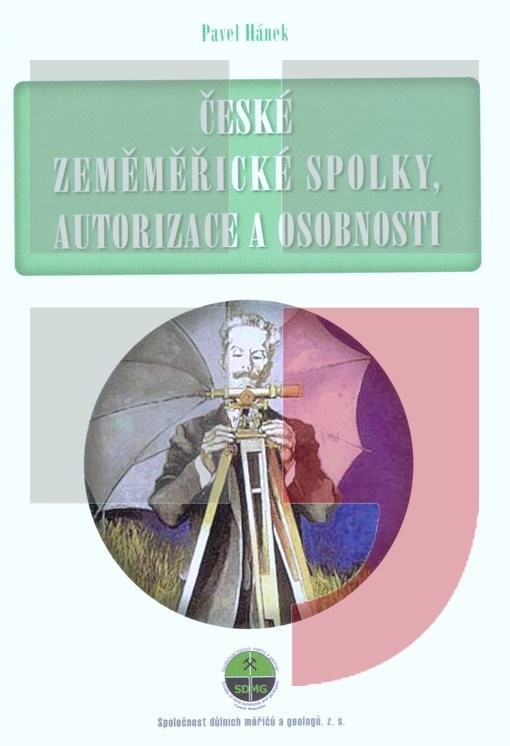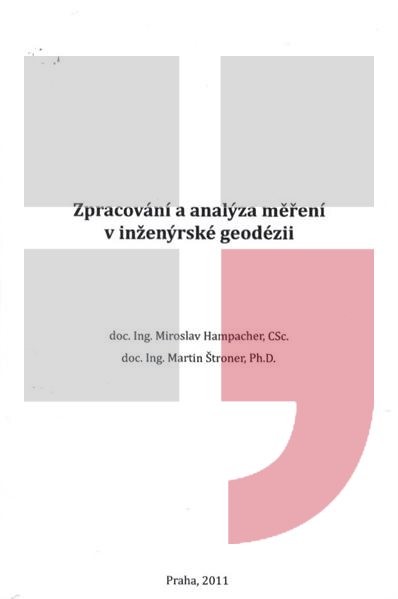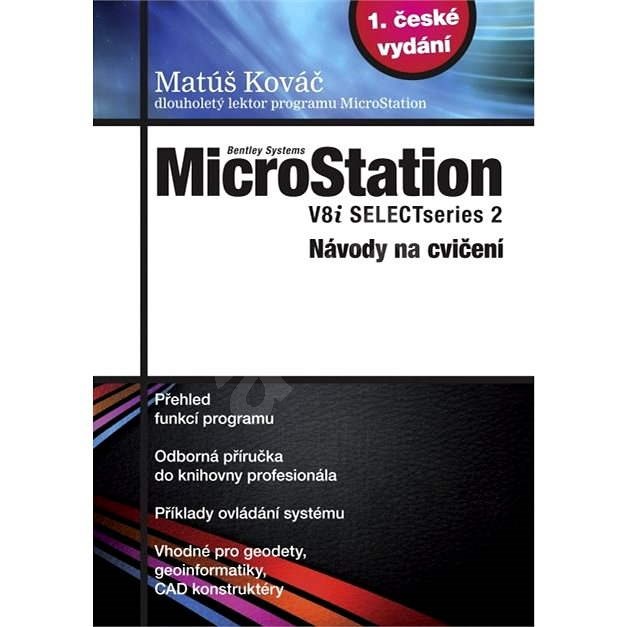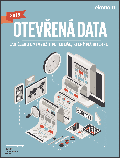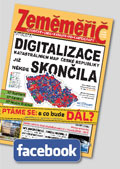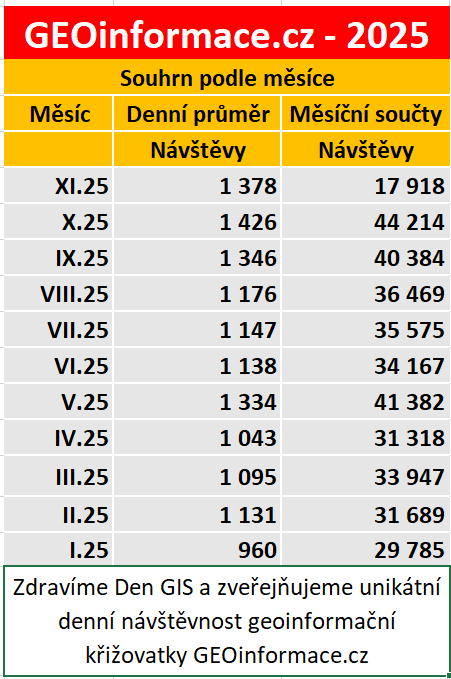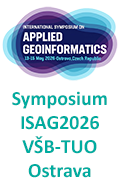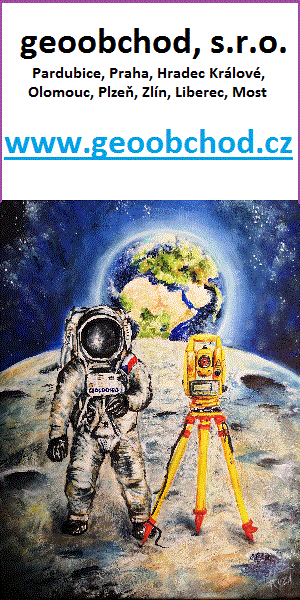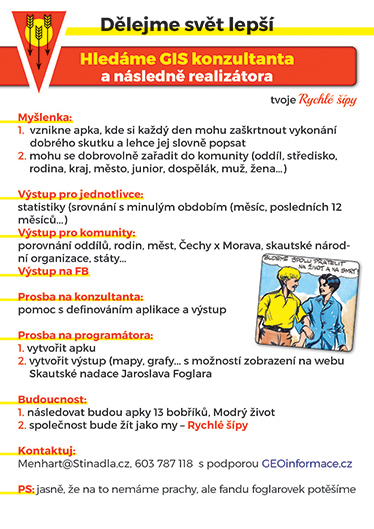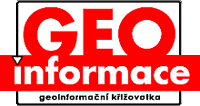zprávy
zdroje zpráv:Uzavření KP Ostrava pro veřejnost dne 1.8.2018
16.7.2018 14:22 ČÚZK - předpisy a opatření Český úřad zeměměřický a katastrální - Katastrální pracoviště Ostrava zveřejnil novou aktualitu: Vážení klienti.dne 1.8.2018 bude ze strany dodavatele, tj. ČEZ Distribuce, a.s., přerušena dodávka elektřiny Katastrálnímu úřadu pro Moravskoslezský kraj, Katastrálnímu pracovišti Ostrava, a to v době od 7.00h do 17.00h. S ohledem na tuto skutečnost bude katastrální pracoviště v uvedeném dni pro veřejnost uzavřeno.
20180716-Gako-07-2018
16.7.2018 12:46 ČÚZK - předpisy a opatření Český úřad zeměměřický a katastrální zveřejnil novou aktualitu: Aktuální číslo Geodetického a kartografického obzoru (7/2018) je k dispozici ke stažení.20180716-Gako-07-2018
16.7.2018 12:46 ČÚZK - předpisy a opatření Český úřad zeměměřický a katastrální zveřejnil novou aktualitu: Aktuální číslo Geodetického a kartografického obzoru (7/2018) je k dispozici ke stažení.20180716-Gako-07-2018
16.7.2018 12:46 ČÚZK - předpisy a opatření Český úřad zeměměřický a katastrální zveřejnil novou aktualitu: Aktuální číslo Geodetického a kartografického obzoru (7/2018) je k dispozici ke stažení.
Nové číslo GaKO
16.7.2018 12:20
ÚGKK SR
Nové číslo časopisu Geodetického a Kartografického Obzoru 7/2018
GSA-funded project delivering MAGNIFIC results in Africa
16.7.2018 10:48 European GNSS Agency
The MAGNIFIC project promoted international cooperation with a view to enabling the development of EGNSS applications in Africa. Several months after the project ended it is continuing to deliver results, as indicated by a recent contract signed by Togo and Thales Alenia Space to install a new search and rescue (SAR) ground station in Lomé.
The core aim of the MAGNIFIC (Multiplying in Africa European Global Navigation Initiatives Fostering Interlaced Cooperation) project, which was funded in the Horizon 2020 1st Galileo call, was to demonstrate the benefits of EGNSS (EGNOS and Galileo) to African stakeholders. The project focused in particular on the six priority market sectors identified in the GSA Action Plan on GNSS applications: road, aviation, maritime, precision, agriculture/environment protection, civil protection and surveillance, and LBS.
EGNSS - a catalyst for development
The effectiveness of the project’s EGNSS promotion work is evidenced by the recent signing of a contract between Togo and Thales Alenia Space for a ground station to be installed in Lomé, Togo, to be used in search and rescue (SAR) operations, mainly using the Galileo satellite positioning system. Based on Thales Alenia Space’s MEOLUT Next (Medium Orbit Local User Terminal), the latest-generation MEOSAR (Medium Orbit Search and Rescue) technology, this system will enable the instantaneous location, with unprecedented accuracy, of a distress call issued by a beacon operating through the COSPAS-SARSAT system.
Read this: GSA hosts Cospas-Sarsat meeting
“In addition to being a great commercial achievement, this contract clearly shows that Togo is taking a leading role in adopting EGNSS applications in Africa. More importantly, it shows us that Africa is a continent that sees Galileo and EGNOSas a catalyst for development. This is a clear, direct and positive result of the strategy we, as a consortium, implemented within MAGNIFIC,” Thales Alenia Space Systems Engineer Michel Monnerat said. “I am sure this first step will pave the way for many future successes in Africa,” he added.
Fully integrated
The fully integrated ground station comprises a compact, high-tech beam-shaping antenna capable of taking maximum advantage of Galileo’s SAR service, a Mission Control Centre (MCC) dedicated to managing and distributing alerts, and a Rescue Coordination Centre (RCC), which interfaces with systems already in place locally or in neighbouring countries.
The ground station will detect and locate any distress signal triggered by a ship, plane or land vehicle, thus enhancing the safety of people and goods. The unexcelled coverage provided by the beam-shaping antenna will allow Togo to receive distress signals over a radius of more than 3,000 kilometres, which means it will cover the entire Gulf of Guinea and a large part of the African continent.
Long-lasting impact
Togo was a particular target of the MAGNIFIC project, which recognised the presence of key economic drivers in the country that were compatible with the development of EGNSS. In the field of civil aviation, two LPV procedures were designed at Lomé airport, achieving minima of 250 feet, compared to 400 feet for existing LNAV procedures, and the feedback from the pilots was extremely positive. The results of this flight campaign were presented during the project’s final conference in Lomé.
Lomé hosted both MAGNIFIC’s first “European GNSS Applications Conference in Africa” in 2015 and the final conference in 2017. The contract between Togo and Thales Alenia Space bears testimony to the long-lasting impact of the Horizon 2020 project.
Media note: This feature can be republished without charge provided the European GNSS Agency (GSA) is acknowledged as the source at the top or the bottom of the story. You must request permission before you use any of the photographs on the site. If you republish, we would be grateful if you could link back to the GSA website (http://www.gsa.europa.eu).
Pozvánka na brněnský workshop doktorandek a doktorandů
16.7.2018 9:49 GISportal.cz
Registrace na brněnský workshop doktorandek a doktorandů je prodloužena. Své abstrakty můžete zasílat do 31.7.2018. Podrobné informace naleznete na webu, případně facebookové události, kde budou v průběhu léta přidávány aktuální informace. Už nyní se můžete těšit na dva hlavní řečníky, kteří pomohou s interpretací nejen geografických hranic.
The post Pozvánka na brněnský workshop doktorandek a doktorandů appeared first on GISportal.cz.
Inspektor Zeměměřického a katastrálního inspektorátu v Brně (obor služby 70.)
16.7.2018 8:42 ČÚZK - předpisy a opatření Zeměměřický a katastrální inspektorát v Brněvypisuje výběrové řízení na místo
Inspektor Zeměměřického a katastrálního inspektorátu v Brně (obor služby 70.)
Inspektor Zeměměřického a katastrálního inspektorátu v Brně (obor služby 70.)
16.7.2018 8:42 ČÚZK - volná místa Zeměměřický a katastrální inspektorát v Brně vypisuje výběrové řízení na místo Inspektor Zeměměřického a katastrálního inspektorátu v Brně (obor služby 70.)T-Mapy: 21. Setkání uživatelů
16.7.2018 7:00 Česká asociace pro geoinformace Společnost T-MAPY, kolektivní člen CAGI, zve všechny zákazníky, obchodní partnery a přátele na v pořadí již jedenadvacáté Setkání uživatelů, produktů a služeb společnosti. Akce se koná ve dnech 1. a 2. října 2018 v Hotelu Jezerka v Ústupkách u Seče.Účastníky čeká seznámení s novinkami v technologiích a produktech společnosti a představení projektů, na
Poskytování údajů z KN
16.7.2018 6:53 ČÚZK - předpisy a opatření Český úřad zeměměřický a katastrální - Katastrální pracoviště Karlovy Varyzveřejnil novou aktualitu: Z důvodu rekonstrukce budovy je od 16.7.2018 přesunuto poskytování údajů z katastru nemovitostí do místnosti podatelny v přízemí budovy katastrálního úřadu.
Poskytování údajů z KN
16.7.2018 6:53 ČÚZK /Urady/Katastralni-urady/Katastralni-urady/Katastralni-urad-pro-Karlovarsky-kraj/Katastralni-pracoviste/KP-Karlovy-Vary/O-uradu/Aktuality/Poskytovani-udaju-z-KNPoskytování údajů z KN
16.7.2018 6:53 ČÚZK - předpisy a opatření Katastrální úřad pro Karlovarský kraj - Katastrální pracoviště Karlovy Varyzveřejnil novou aktualitu: Z důvodu rekonstrukce budovy je od 16.7.2018 přesunuto poskytování údajů z katastru nemovitostí do místnosti podatelny v přízemí budovy katastrálního úřadu.
Poskytování údajů z KN
16.7.2018 6:53 ČÚZK - předpisy a opatření Katastrální úřad pro Karlovarský kraj - Katastrální pracoviště Karlovy Varyzveřejnil novou aktualitu: Z důvodu rekonstrukce budovy je od 16.7.2018 přesunuto poskytování údajů z katastru nemovitostí do místnosti podatelny v přízemí budovy katastrálního úřadu.
Poskytování údajů z KN
16.7.2018 6:53 ČÚZK /Urady/Katastralni-urady/Katastralni-urady/Katastralni-urad-pro-Karlovarsky-kraj/Katastralni-pracoviste/KP-Karlovy-Vary/O-uradu/Aktuality/Poskytovani-udaju-z-KNPoskytování údajů z KN
16.7.2018 6:53 ČÚZK - předpisy a opatření Český úřad zeměměřický a katastrální - Katastrální pracoviště Karlovy Varyzveřejnil novou aktualitu: Z důvodu rekonstrukce budovy je od 16.7.2018 přesunuto poskytování údajů z katastru nemovitostí do místnosti podatelny v přízemí budovy katastrálního úřadu.
GEOPROCESSINGOVÁ SLUŽBA Esri ArcGIS Server – SurfaceDifference DMR 5G
16.7.2018 2:00 Cenia - Katalog metadat ČR - INSPIRE Geoprocessingová služba Esri ArcGIS Server - SurfaceDifference DMR 5G je veřejná služba určená pro výpočet rozdílu mezi zadaným povrchem (vloženým tvarem) a povrchem terénu reprezentovaného digitálním modelem reliéfu České republiky 5. generace (DMR 5G) převedeným do rastrového formátu s rozlišením 2 m.Zóny a aglomerace hodnocení a řízení kvality ovzduší (WFS)
16.7.2018 2:00 Cenia - Katalog metadat ČR - INSPIRE Stahovací služba pro vrstvu zón a aglomerací hodnocení a řízení kvality ovzduší na území České republiky.Lokální síť monitorující proudění CO2 - CarbonNet
16.7.2018 2:00 Cenia - Katalog metadat ČR - INSPIRE Lokální síť Carbonet pro monitorování výstupu přírodního oxidu uhličitého v západních Čechách.ČHMÚ ovzduší - Zóny a aglomerace hodnocení a řízení kvality ovzduší
16.7.2018 2:00 Cenia - Katalog metadat ČR - INSPIRE Vrstva zón a aglomerací hodnocení a řízení kvality ovzduší na území České republiky. Zóny a aglomerace jsou vymezeny na základě legislativních specifikací Směrnice EU 2008/50/EC a zákona č. 201/2012 Sb., o ochraně ovzduší.GEOPROCESSINGOVÁ SLUŽBA Esri ArcGIS Server – Aspect DMR 5G
16.7.2018 2:00 Cenia - Katalog metadat ČR - INSPIRE Geoprocessingová služba Esri ArcGIS Server - Aspect _DMR5G je veřejná služba určená pro zjištění míst (částí území) v rámci zadaného území, které odpovídají stanovené orientaci svahu (v zadaném rozsahu azimutů) nad digitálním modelem reliéfu České republiky 5. generace (DMR 5G) převedeným do rastrového formátu s rozlišením 2 m.GEOPROCESSINGOVÁ SLUŽBA Esri ArcGIS Server – Slope DMR 5G
16.7.2018 2:00 Cenia - Katalog metadat ČR - INSPIRE Geoprocessingová služba Esri ArcGIS Server - Slope_DMR5G je veřejná služba určená pro zjištění míst (částí území) v rámci zadaného území, které odpovídají stanovenému rozsahu sklonitosti nad digitálním modelem reliéfu České republiky 5. generace (DMR 5G) převedeným do rastrového formátu s rozlišením 2 m.GEOPROCESSINGOVÁ SLUŽBA Esri ArcGIS Server – ElevationRange DMR 5G
16.7.2018 2:00 Cenia - Katalog metadat ČR - INSPIRE Geoprocessingová služba Esri ArcGIS Server - ElevationRange_DMR5G je veřejná služba určená pro zjištění míst (částí území) v rámci zadaného území, které odpovídají stanovenému rozsahu nadmořských výšek nad digitálním modelem reliéfu České republiky 5. generace (DMR 5G) převedeným do rastrového formátu s rozlišením 2 m.GEOPROCESSINGOVÁ SLUŽBA Esri ArcGIS Server – ElevationMaxMin DMR 5G
16.7.2018 2:00 Cenia - Katalog metadat ČR - INSPIRE Geoprocessingová služba Esri ArcGIS Server - ElevationMaxMin_DMR5G je veřejná služba určená pro zjištění míst s maximální/minimální nadmořskou výškou (včetně hodnot) v rámci zadaného území (polygonu) nebo po zadané linii nad digitálním modelem reliéfu České republiky 5. generace (DMR 5G) převedeným do rastrového formátu s rozlišením 2 m.Oznámení o přerušení provozu Pobočky Blansko (KPÚ pro Jihomoravský kraj)
16.7.2018 0:00 Státní pozemkový úřad Z důvodu přerušení dodávky pitné vody bude v pondělí 16. 7. 2018 od 14 hod. přerušen provoz na Pobočce Blansko (KPÚ pro Jihomoravský kraj).Oznámení o přerušení provozu Pobočky Třebíč (KPÚ pro Kraj Vysočina)
16.7.2018 0:00 Státní pozemkový úřad Z důvodu plánovaného přerušení dodávky elektrické energie bude ve středu 18. 7. 2018 přerušen provoz na Pobočce Třebíč (KPÚ pro Kraj Vysočina).Carlson SurvCE and SurvPC 6.0 Available Now
15.7.2018 20:39 Carlson Software MAYSVILLE, Kentucky, U.S.A. — Carlson Software’s popular and versatile in-the-field land surveying software, Carlson SurvCE 6.0 for data collectors and Carlson SurvPC 6.0 for ruggedized tablets and laptops is now available. The newly released software features several new features, improvements, and introduces the optional paid Hybrid+ module, allowing users to survey with both GPS and […]"Inspiring What’s Next at Esri User Conference 2018" by Susan Smith
15.7.2018 10:53 GISCafe.com Webcasts-WebinarsArcGIS Indoors – Interiérové mapovanie od ESRI
13.7.2018 21:00 Geocommunity.skEsri, americký líder v oblasti GIS, pred niekoľkými dňami ohlásil sprístupnenie novej platformy ArcGIS Indoors, ktorá umožňuje interaktívne mapovanie interiérov korporátnych priestorov, polyfunkčných objektov, letísk, nemocníc či univerzít. Podľa stanoviska Esri, nová platforma integruje najmodernejšiu priestorovú technológiu, ktorá umožňuje používateľom získavať a následne zdieľať informácie polohe jednotlivých miestností, zariadení, núdzových východov, či konkrétnych kancelárií. ArcGIS … … Čítať ďalej
Príspevok ArcGIS Indoors – Interiérové mapovanie od ESRI zobrazený najskôr GeoCommunity.sk.
ArcGIS Indoors – Interiérové mapovanie od ESRI
13.7.2018 21:00 Geocommunity.skPríspevok ArcGIS Indoors – Interiérové mapovanie od ESRI zobrazený najskôr GeoCommunity.sk.
Program sekcie OpenGIS & OpenData na OSSConf 2018 Copy
13.7.2018 21:00 Geocommunity.skPríspevok Program sekcie OpenGIS & OpenData na OSSConf 2018 Copy zobrazený najskôr GeoCommunity.sk.
ArcGIS Indoors – Interiérové mapovanie od ESRI
13.7.2018 21:00 Geocommunity.skPríspevok ArcGIS Indoors – Interiérové mapovanie od ESRI zobrazený najskôr GeoCommunity.sk.
ArcGIS Indoors – Interiérové mapovanie od ESRI
13.7.2018 21:00 Geocommunity.skPríspevok ArcGIS Indoors – Interiérové mapovanie od ESRI zobrazený najskôr GeoCommunity.sk.
Bentley gains edge in 4D modelling
13.7.2018 18:01 Bentley SystemsPress Coverage
Equities, USA
Read the articleSolving The Utility Project Information Management Challenge
13.7.2018 17:56 Bentley SystemsPress Coverage
Water Online, USA
Read the articleExtended 4D modelling workflow for infrastructure projects
13.7.2018 17:47 Bentley SystemsPress Coverage
EE Publishers, Sub Sharan Africa
Read the articleAktualizace dat Integrovaného registru znečišťování a nová stahovací služba
13.7.2018 16:23 CENIA - národní geoportál INSPIRE Na základě dat z Integrovaného registru znečišťování byla aktualizována mapová služba "Provozovny ohlašovatelů do IRZ" a mapová kompozice "CENIA - Provozovny ohlašovatelů do IRZ 2004-2016", nejnovějším přírůstkem jsou data za rok 2016. Nově pak byla vytvořena INSPIRE stahovací služba Provozovny ohlašovatelů do IRZ (WFS) pro data za rok 2016. IRZ je veřejně přístupná databáze...It’s all go in summer for Greenland’s glaciers
13.7.2018 16:15 ESA Observing the Earth
The Copernicus Sentinel-1 mission has revealed that, on average, Greenland’s glaciers are now flowing more slowly into the Arctic Ocean. While glacial flow may have slowed overall, in summer glaciers flow 25% faster than they do in the winter.
20180713-VR Analytik-projektant
13.7.2018 11:28 ČÚZK - předpisy a opatření Český úřad zeměměřický a katastrální zveřejnil novou aktualitu: Oznámení o vyhlášení výběrového řízení na služební místo Analytik/analytička - projektant/projektantka.20180713-VR Analytik-projektant
13.7.2018 11:28 ČÚZK - předpisy a opatření Český úřad zeměměřický a katastrální zveřejnil novou aktualitu: Oznámení o vyhlášení výběrového řízení na služební místo Analytik/analytička - projektant/projektantka.20180713-VR Analytik-projektant
13.7.2018 11:28 ČÚZK /Aktuality-resort/2018/20180713-VR-Analytik-projektantAnalytik/analytička - projektant/projektantka
13.7.2018 11:06 ČÚZK - volná místa Český úřad zeměměřický a katastrální vypisuje výběrové řízení na místo Analytik/analytička - projektant/projektantkaAnalytik/analytička - projektant/projektantka
13.7.2018 11:06 ČÚZK - předpisy a opatření Český úřad zeměměřický a katastrálnívypisuje výběrové řízení na místo
Analytik/analytička - projektant/projektantka
Analytik/analytička - projektant/projektantka
13.7.2018 11:06 ČÚZK - předpisy a opatření Český úřad zeměměřický a katastrálnívypisuje výběrové řízení na místo
Analytik/analytička - projektant/projektantka
Analytik/analytička - projektant/projektantka
13.7.2018 11:06 ČÚZK /Urady/Cesky-urad-zememericky-a-katastralni/Uredni-deska/Oznameni-a-jina-uredni-sdeleni/Volna-mista/Analytik-analyticka-projektant-projektantka-(1)Europe’s next Galileo satellites in place atop Ariane 5
13.7.2018 10:42 ESA Navigation
Europe’s next Galileo satellites have been put in place on top of the Ariane 5 launcher due to lift them from Europe’s Spaceport in Kourou, French Guiana on Wednesday 25 July.
Airbus-led consortium to provide European Union with seamless satellite-based coverage of Europe at unprecedented scale and speed
13.7.2018 10:40 GISCafe.com Webcasts-Webinars Toulouse, 12 July 2018 – The European Commission and the European Space Agency (ESA) have awarded an Airbus-led consortium a contract for the …OA Suzuki Ignis (2005)
13.7.2018 10:29 ČÚZK - předpisy a opatřeníKatastrální úřad pro Jihočeský kraj nabízí nepotřebný majetek k odkupu. Jedná se o
OA Suzuki Ignis (2005)
OA Suzuki Ignis (2005)
13.7.2018 10:29 ČÚZK - předpisy a opatřeníKatastrální úřad pro Jihočeský kraj nabízí nepotřebný majetek k odkupu. Jedná se o
OA Suzuki Ignis (2005)
OA Suzuki Ignis (2005)
13.7.2018 10:29 ČÚZK /Urady/Katastralni-urady/Katastralni-urady/Katastralni-urad-pro-Jihocesky-kraj/Nabidky-majetku/OA-Suzuki-Ignis-(1)OA Škoda Fabia Combi (2003)
13.7.2018 10:27 ČÚZK /Urady/Katastralni-urady/Katastralni-urady/Katastralni-urad-pro-Jihocesky-kraj/Nabidky-majetku/OA-Skoda-Fabia-Combi-(3)OA Škoda Fabia Combi (2003)
13.7.2018 10:27 ČÚZK - předpisy a opatřeníKatastrální úřad pro Jihočeský kraj nabízí nepotřebný majetek k odkupu. Jedná se o
OA Škoda Fabia Combi (2003)
OA Škoda Fabia Combi (2003)
13.7.2018 10:27 ČÚZK - předpisy a opatřeníKatastrální úřad pro Jihočeský kraj nabízí nepotřebný majetek k odkupu. Jedná se o
OA Škoda Fabia Combi (2003)
EU space programmes centre stage at UN SDG event
13.7.2018 10:25 European GNSS Agency
The contribution of Europe’s space programmes Galileo and Copernicus in building sustainable and resilient societies was in focus at the ‘My Planet, My Future: Space for the Sustainable Development Goals’ exhibition, launched at United Nations HQ in New York on July 10 and set to run until September 5.
Opening the exhibition, which showcases satellite images and videos that illustrate space technology’s contribution to the achievement of the SDGs, Pierre Delsaux, Deputy Director General at the European Commission's Directorate General for the Internal Market, Industry, Entrepreneurship and Small and Medium Enterprises said: “This is an excellent opportunity to show how the European Union’s space programme can contribute to the benefit of the entire planet.”
Delivering real services
This contribution was highlighted in a recent joint study from the United Nations Office for Outer Space Affairs (UNOOSA) and the European GNSS Agency (GSA), which showed that 40% of the 169 indicators underpinning the 17 SDGs are reliant on the use of space-based science and technology.
Read this: European GNSS and the environment
Speaking at the event, GSA Executive Director Carlo des Dorides said that while the contribution of space services to communications, business and the economy is increasingly recognised, awareness of the benefits that space-based solutions can bring to the health, well-being and sustainability of the planet needs to be better understood.
“As the only European Union agency operating and delivering space services, the GSA is dedicated to ensuring that EU investment in independent, civil run satellite navigation systems deliver real services and benefits for people and the planet,” des Dorides said.
In his address, des Dorides noted that the synergy of Galileo and Copernicus supports the Zero Hunger, Climate Action and Better Life on Land goals through precision agriculture applications that optimise crop production. He also noted that the EU Space Programme directly contributes to the goal on Climate Action by supporting urban development and smart cities planning. “This is especially critical given that more than 60% of the global population will live in cities by 2030,” he said.
Stakeholder involvement
UNOOSA Director Simonetta Di Pippo noted that, in order to bring the benefits of space to all nations, it is necessary to raise awareness of the importance of space science and technology to sustainable development and how it can contribute to the global community’s commitment to leave no one behind. “Activities such as this exhibit offer us great avenues to communicate how space can contribute to the achievement of the SDGs and underline the need for all stakeholders and decision-makers to get involved,” she said.
 The exhibition showcases satellite images and videos that illustrate space technology’s contribution to sustainable development
The exhibition showcases satellite images and videos that illustrate space technology’s contribution to sustainable development
The exhibition, which focuses in particular on the SDGs being reviewed at a High-level Political Forum on Sustainable Development being held at UNHQ on 9-18 July, is organised by the NGO CANEUS International with the support of the UNOOSA, and sponsored by the European Commission, the GSA and the German Aerospace Centre (DLR).
#SPACE4SDGS: The Space 2030 Agenda
On the margins of the High-level Political Forum, the side event #SPACE4SDGS: The Space 2030 Agenda was held on July 10. The joint study from UNOOSA and the GSA - European Global Navigation Satellite System and Copernicus: Supporting the Sustainable Development Goals Building Blocks towards the 2030 Agenda – was presented at this event.
The participants discussed the next steps towards establishing a coherent ‘Space2030 Agenda’ approach on how space science and technology is used to support the implementation of the UN’s sustainable development agenda. The side event also included a debrief on the results of UNISPACE+50, a global gathering of the space community held at the UN Offices in Vienna, Austria in June.
Media note: This feature can be republished without charge provided the European GNSS Agency (GSA) is acknowledged as the source at the top or the bottom of the story. You must request permission before you use any of the photographs on the site. If you republish, we would be grateful if you could link back to the GSA website (http://www.gsa.europa.eu).
EU space programmes centre stage at UN SDG event
13.7.2018 10:25 European GNSS Agency
The contribution of Europe’s space programmes Galileo and Copernicus in building sustainable and resilient societies was in focus at the ‘My Planet, My Future: Space for the Sustainable Development Goals’ exhibition, launched at United Nations HQ in New York on July 10 and set to run until September 5.
Opening the exhibition, which showcases satellite images and videos that illustrate space technology’s contribution to the achievement of the SDGs, Pierre Delsaux, Deputy Director General at the European Commission's Directorate General for the Internal Market, Industry, Entrepreneurship and Small and Medium Enterprises said: “This is an excellent opportunity to show how the European Union’s space programme can contribute to the benefit of the entire planet.”
Delivering real services
This contribution was highlighted in a recent joint study from the United Nations Office for Outer Space Affairs (UNOOSA) and the European GNSS Agency (GSA), which showed that 40% of the 169 indicators underpinning the 17 SDGs are reliant on the use of space-based science and technology.
Read this: European GNSS and the environment
Speaking at the event, GSA Executive Director Carlo des Dorides said that while the contribution of space services to communications, business and the economy is increasingly recognised, awareness of the benefits that space-based solutions can bring to the health, well-being and sustainability of the planet needs to be better understood.
“As the only European Union agency operating and delivering space services, the GSA is dedicated to ensuring that EU investment in independent, civil run satellite navigation systems deliver real services and benefits for people and the planet,” des Dorides said.
In his address, des Dorides noted that the synergy of Galileo and Copernicus supports the Zero Hunger, Climate Action and Better Life on Land goals through precision agriculture applications that optimise crop production. He also noted that the EU Space Programme directly contributes to the goal on Climate Action by supporting urban development and smart cities planning. “This is especially critical given that more than 60% of the global population will live in cities by 2030,” he said.
Stakeholder involvement
UNOOSA Director Simonetta Di Pippo noted that, in order to bring the benefits of space to all nations, it is necessary to raise awareness of the importance of space science and technology to sustainable development and how it can contribute to the global community’s commitment to leave no one behind. “Activities such as this exhibit offer us great avenues to communicate how space can contribute to the achievement of the SDGs and underline the need for all stakeholders and decision-makers to get involved,” she said.
 The exhibition showcases satellite images and videos that illustrate space technology’s contribution to sustainable development
The exhibition showcases satellite images and videos that illustrate space technology’s contribution to sustainable development
The exhibition, which focuses in particular on the SDGs being reviewed at a High-level Political Forum on Sustainable Development being held at UNHQ on 9-18 July, is organised by the NGO CANEUS International with the support of the UNOOSA, and sponsored by the European Commission, the GSA and the German Aerospace Centre (DLR).
#SPACE4SDGS: The Space 2030 Agenda
On the margins of the High-level Political Forum, the side event #SPACE4SDGS: The Space 2030 Agenda was held on July 10. The joint study from UNOOSA and the GSA - European Global Navigation Satellite System and Copernicus: Supporting the Sustainable Development Goals Building Blocks towards the 2030 Agenda – was presented at this event.
The participants discussed the next steps towards establishing a coherent ‘Space2030 Agenda’ approach on how space science and technology is used to support the implementation of the UN’s sustainable development agenda. The side event also included a debrief on the results of UNISPACE+50, a global gathering of the space community held at the UN Offices in Vienna, Austria in June.
Media note: This feature can be republished without charge provided the European GNSS Agency (GSA) is acknowledged as the source at the top or the bottom of the story. You must request permission before you use any of the photographs on the site. If you republish, we would be grateful if you could link back to the GSA website (http://www.gsa.europa.eu).
EU space programmes centre stage at UN SDG event
13.7.2018 10:25 European GNSS Agency
The contribution of Europe’s space programmes Galileo and Copernicus in building sustainable and resilient societies was in focus at the ‘My Planet, My Future: Space for the Sustainable Development Goals’ exhibition, launched at United Nations HQ in New York on July 10 and set to run until September 5.
Opening the exhibition, which showcases satellite images and videos that illustrate space technology’s contribution to the achievement of the SDGs, Pierre Delsaux, Deputy Director General at the European Commission's Directorate General for the Internal Market, Industry, Entrepreneurship and Small and Medium Enterprises said: “This is an excellent opportunity to show how the European Union’s space programme can contribute to the benefit of the entire planet.”
Delivering real services
This contribution was highlighted in a recent joint study from the United Nations Office for Outer Space Affairs (UNOOSA) and the European GNSS Agency (GSA), which showed that 40% of the 169 indicators underpinning the 17 SDGs are reliant on the use of space-based science and technology.
Read this: European GNSS and the environment
Speaking at the event, GSA Executive Director Carlo des Dorides said that while the contribution of space services to communications, business and the economy is increasingly recognised, awareness of the benefits that space-based solutions can bring to the health, well-being and sustainability of the planet needs to be better understood.
“As the only European Union agency operating and delivering space services, the GSA is dedicated to ensuring that EU investment in independent, civil run satellite navigation systems deliver real services and benefits for people and the planet,” des Dorides said.
In his address, des Dorides noted that the synergy of Galileo and Copernicus supports the Zero Hunger, Climate Action and Better Life on Land goals through precision agriculture applications that optimise crop production. He also noted that the EU Space Programme directly contributes to the goal on Climate Action by supporting urban development and smart cities planning. “This is especially critical given that more than 60% of the global population will live in cities by 2030,” he said.
Stakeholder involvement
UNOOSA Director Simonetta Di Pippo noted that, in order to bring the benefits of space to all nations, it is necessary to raise awareness of the importance of space science and technology to sustainable development and how it can contribute to the global community’s commitment to leave no one behind. “Activities such as this exhibit offer us great avenues to communicate how space can contribute to the achievement of the SDGs and underline the need for all stakeholders and decision-makers to get involved,” she said.
 The exhibition showcases satellite images and videos that illustrate space technology’s contribution to sustainable development
The exhibition showcases satellite images and videos that illustrate space technology’s contribution to sustainable development
The exhibition, which focuses in particular on the SDGs being reviewed at a High-level Political Forum on Sustainable Development being held at UNHQ on 9-18 July, is organised by the NGO CANEUS International with the support of the UNOOSA, and sponsored by the European Commission, the GSA and the German Aerospace Centre (DLR).
#SPACE4SDGS: The Space 2030 Agenda
On the margins of the High-level Political Forum, the side event #SPACE4SDGS: The Space 2030 Agenda was held on July 10. The joint study from UNOOSA and the GSA - European Global Navigation Satellite System and Copernicus: Supporting the Sustainable Development Goals Building Blocks towards the 2030 Agenda – was presented at this event.
The participants discussed the next steps towards establishing a coherent ‘Space2030 Agenda’ approach on how space science and technology is used to support the implementation of the UN’s sustainable development agenda. The side event also included a debrief on the results of UNISPACE+50, a global gathering of the space community held at the UN Offices in Vienna, Austria in June.
Media note: This feature can be republished without charge provided the European GNSS Agency (GSA) is acknowledged as the source at the top or the bottom of the story. You must request permission before you use any of the photographs on the site. If you republish, we would be grateful if you could link back to the GSA website (http://www.gsa.europa.eu).
OA Škoda Fabia Combi (2003)
13.7.2018 10:25 ČÚZK /Urady/Katastralni-urady/Katastralni-urady/Katastralni-urad-pro-Jihocesky-kraj/Nabidky-majetku/OA-Skoda-Fabia-Combi-(2)OA Škoda Fabia Combi (2003)
13.7.2018 10:25 ČÚZK - předpisy a opatřeníKatastrální úřad pro Jihočeský kraj nabízí nepotřebný majetek k odkupu. Jedná se o
OA Škoda Fabia Combi (2003)
OA Škoda Fabia Combi (2003)
13.7.2018 10:25 ČÚZK - předpisy a opatřeníKatastrální úřad pro Jihočeský kraj nabízí nepotřebný majetek k odkupu. Jedná se o
OA Škoda Fabia Combi (2003)
OA Škoda Felicia Combi (1996)
13.7.2018 10:23 ČÚZK - předpisy a opatřeníKatastrální úřad pro Jihočeský kraj nabízí nepotřebný majetek k odkupu. Jedná se o
OA Škoda Felicia Combi (1996)
OA Škoda Felicia Combi (1996)
13.7.2018 10:23 ČÚZK - předpisy a opatřeníKatastrální úřad pro Jihočeský kraj nabízí nepotřebný majetek k odkupu. Jedná se o
OA Škoda Felicia Combi (1996)
OA Škoda Felicia Combi (1996)
13.7.2018 10:23 ČÚZK /Urady/Katastralni-urady/Katastralni-urady/Katastralni-urad-pro-Jihocesky-kraj/Nabidky-majetku/OA-Skoda-Felicia-Combi-(1996)OA Škoda Felicia Combi (1996)
13.7.2018 10:23 ČÚZK /Urady/Katastralni-urady/Katastralni-urady/Katastralni-urad-pro-Jihocesky-kraj/Nabidky-majetku/OA-Skoda-Felicia-Combi-(1996)Earth from Space
13.7.2018 10:05 ESA Observing the Earth
In this week's edition, Sentinel-3 takes us over eastern China
Shanghai
13.7.2018 10:05 ESA Observing the Earth
Earth observation image of the week: a Sentinel-3 view over eastern China and the city of Shanghai
Czech Stability Award AAA 2018
13.7.2018 9:50 HrdličkaJedná se o ocenění od významné evropské analytické společnosti BISNODE, shromažďující dlouhodobá data o firmách. Rating AAA je nejvyšší možné ocenění, které reflektuje délku existence firmy, region, hospodářské výsledky, platební morálku, vztahy s dalšími podnikatelskými subjekty apod. Aktuálně na tento rating dosáhne pouze 0,2% firem. Výsledky hodnocení jednotlivých společností jsou každoročně vyhlašovány v rámci žebříčku... View Article
The post Czech Stability Award AAA 2018 appeared first on HRDLIČKA spol. s r.o. - komplexní služby v oblasti geodézie.
odborný referent v oddělení aktualizace KN I. Katastrálního pracoviště Havlíčkův Brod
13.7.2018 8:26 ČÚZK /Urady/Katastralni-urady/Katastralni-urady/Katastralni-urad-pro-Vysocinu/Katastralni-pracoviste/KP-Havlickuv-Brod/O-uradu/Aktuality/odborny-referent-v-oddeleni-aktualizace-KN-I-Kataodborný referent v oddělení aktualizace KN I. Katastrálního pracoviště Havlíčkův Brod
13.7.2018 8:26 ČÚZK - předpisy a opatření Katastrální úřad pro Vysočinu - Katastrální pracoviště Havlíčkův Brod zveřejnil novou aktualitu: Oznámení o vyhlášení výběrového řízení na služební místo odborný referent v oddělení aktualizace KN I. Katastrálního pracoviště Havlíčkův Brododborný referent v oddělení aktualizace KN I. Katastrálního pracoviště Havlíčkův Brod
13.7.2018 8:26 ČÚZK - předpisy a opatření Katastrální úřad pro Vysočinu - Katastrální pracoviště Havlíčkův Brod zveřejnil novou aktualitu: Oznámení o vyhlášení výběrového řízení na služební místo odborný referent v oddělení aktualizace KN I. Katastrálního pracoviště Havlíčkův Brododborný referent v oddělení aktualizace KN I. Katastrálního pracoviště Havlíčkův Brod
13.7.2018 8:20 ČÚZK - předpisy a opatření Katastrální úřad pro Vysočinu - Katastrální pracoviště Havlíčkův Brodvypisuje výběrové řízení na místo
odborný referent v oddělení aktualizace KN I. Katastrálního pracoviště Havlíčkův Brod
odborný referent v oddělení aktualizace KN I. Katastrálního pracoviště Havlíčkův Brod
13.7.2018 8:20 ČÚZK - předpisy a opatření Katastrální úřad pro Vysočinu - Katastrální pracoviště Havlíčkův Brodvypisuje výběrové řízení na místo
odborný referent v oddělení aktualizace KN I. Katastrálního pracoviště Havlíčkův Brod
odborný referent v oddělení aktualizace KN I. Katastrálního pracoviště Havlíčkův Brod
13.7.2018 8:20 ČÚZK /Urady/Katastralni-urady/Katastralni-urady/Katastralni-urad-pro-Vysocinu/Uredni-deska/Oznameni-a-jina-uredni-sdeleni/Volna-mista/odborny-referent-v-oddeleni-aktualizace-KN-I-Kataodborný referent v oddělení aktualizace KN I. Katastrálního pracoviště Havlíčkův Brod
13.7.2018 8:20 ČÚZK - volná místa Katastrální úřad pro Vysočinu - Katastrální pracoviště Havlíčkův Brod vypisuje výběrové řízení na místo odborný referent v oddělení aktualizace KN I. Katastrálního pracoviště Havlíčkův BrodProvozovny ohlašovatelů do IRZ (WFS)
13.7.2018 2:00 Cenia - Katalog metadat ČR - INSPIRE Stahovací služba pro aktuální datovou sadu z databáze údajů o emisích do ovzduší, vody, půdy a o přenosech (odpadech a odpadních vodách).Imisní charakteristiky, celkové emise a síť imisních měřicích stanic
13.7.2018 2:00 Cenia - Katalog metadat ČR - INSPIRE Služba byla vytvořena na základě dat ČHMÚ a obsahuje vrstvy:1) Imisní charakteristiky v gridu 1x1 km:SO2 – 4. nejvyšší 24hod. koncentrace SO2, [µg.m-3],O3 – hodnoty expozičního indexu AOT40, průměr za 5 let, [µg.m-3],O3 – 26. nejvyšší maximální denní 8hod. klouzavý průměr koncentrace přízemního ozonu v průměru za 3 roky, 2013–2015 [µg.m-3],PM10 – roční průměrná koncentrace [µg.m-3],NO2 – roční průměrná koncentrace [µg.m-3],2) Celkové emise znečišťujících látek v gridu 5 km x 5 km:Celkové emise tuhých znečišťujících látek v gridu 5 km x 5 km,Celkové emise SO2 v gridu 5 km x 5 km,Celkové emise NOx v gridu 5 km x 5 km,Celkové emise oxidu uhelnatého v gridu 5 km x 5 km,3) síť imisních měřicích stanic (měřicích programů) registrovaných v databázi ISKO.4) zóny a aglomerace hodnocení a řízení kvality ovzdušíCENIA - Provozovny ohlašovatelů do IRZ 2004-2016
13.7.2018 2:00 Cenia - Katalog metadat ČR - INSPIRE Kompozice obsahuje vrstvy s provozovnami ohlašovatelů do IRZ podle OKEČ (CZ-NACE), E-PRTR a IPPC za roky 2004-2016.Open ELS Project publishes data policy to boost use of official geospatial information
12.7.2018 19:17 GISCafe.com Webcasts-Webinars July 12, 2018 -- Harmonised geospatial data from official national sources will be free to access and available under an open licence through the …Intermap Technologies Reports Expanded U.S. Government Task Order, NGA contract selection, and Thailand Soccer Team Rescue Support
12.7.2018 17:29 GISCafe.com Webcasts-Webinars DENVER, July 12, 2018 — (PRNewswire) — (TSX: IMP) (ITMSF:BB) – Intermap Technologies Corporation ("Intermap" or the …Nový termín startu kosmického teleskopu JWST
12.7.2018 17:15 Český Kosmický PortálPo dokončení nezávislé revize bylo stanoveno nové datum startu Kosmického teleskopu Jamese Webba (JWST, James Webb Space Telescope): 30. března 2021.
Nový termín startu kosmického teleskopu JWST
12.7.2018 17:15 Český Kosmický PortálPo dokončení nezávislé revize bylo stanoveno nové datum startu Kosmického teleskopu Jamese Webba (JWST, James Webb Space Telescope): 30. března 2021.
Collaboration on process industries academy initiative
12.7.2018 14:50 Bentley SystemsPress Coverage
EE Publishers, Sub Saharan Africa
Read the articleCollaborative plant design with cloud data management
12.7.2018 14:47 Bentley SystemsPress Coverage
EE Publishers, Sub Saharan Africa
Read the articleFocus areas of Bentley Systems in India
12.7.2018 14:37 Bentley SystemsPress Coverage
Geospatial World, India
Read the articleAzteca Systems releases Cityworks 15.3
12.7.2018 12:07 GISCafe.com Webcasts-Webinars SANDY, UTAH (July 11, 2018) — Cityworks–Azteca Systems announced the release of Cityworks 15.3, the latest version of the company’s …CoreLogic and Esri Expand Premium Content Offerings
12.7.2018 11:28 GISCafe.com Webcasts-Webinars CoreLogic parcel and property content now available through Esri ArcGIS Marketplace and via mobile-friendly web apps for field professionalsIRVINE, …
OGC Calls for Participation in Vector Tiles Pilot
12.7.2018 11:20 GISCafe.com Webcasts-Webinars OGC Vector Tiles Pilot will create extensions for use in OGC Web Services, GeoPackage, and supply a conceptual abstract model that can be used across …Seminář: Analýza dat napříč platformou ArcGIS
12.7.2018 7:00 Česká asociace pro geoinformace6. listopadu 2018, tedy den před konferencí GIS Esri v ČR, proběhne v Kongesovém centru Praha předkonferenční seminář na téma Analýza dat napříč platformou ArcGIS. Seminář je určen pro všechny uživatele ArcGIS Desktop, kteří se zajímají o aktuální vývoj možností GIS analýzy. Cílem semináře je podat přehled analytických možností jednotlivých komponent
Letní škola Prameny spojují
12.7.2018 7:00 Česká asociace pro geoinformaceTým vědců z Technické univerzity v Liberci, České zemědelské univerzity a Technische universität Dresden zkoumá už třetím rokem prameny v oblasti česko-saské hranice v Jizerských a Lužických horách. Pro studenty středních škol se zájmem o přírodu pořádají Letní školu a právě obsazují poslední volná místa.
Co bude na programu Letní školy? Přímo v
Register pôdy LPIS
12.7.2018 6:00
ÚGKK SR
Nová vrstva LPIS 2018 v Mapovom klientovi ZBGIS v téme Kataster nehnuteľností.
Drones Saving More Lives, Being Adopted by More Public Safety Agencies, Reports Skyfire Consulting
11.7.2018 19:14 GISCafe.com Webcasts-Webinars ATLANTA, July 11, 2018 — (PRNewswire) — Small unmanned aerial vehicles, colloquially known as drones, are being adopted by more …Synergetics Awarded USGS Modernization Contract
11.7.2018 19:14 GISCafe.com Webcasts-Webinars Fort Collins-based Company to Provide Database Consolidation Services for Quality Systems BranchFORT COLLINS, Colo., July 11, 2018 — …
3DR Launches Industry-First Thermal Imaging Solution for DJI M200 Series Drones
11.7.2018 19:14 GISCafe.com Webcasts-Webinars Easily capture accurate, structurally-detailed thermal dataBERKELEY, Calif., July 11, 2018 — (PRNewswire) — 3DR, makers of Site …
Planet Signs Deal with Thailand's Space Agency to Serve National Monitoring
11.7.2018 16:55 GISCafe.com Webcasts-Webinars SAN FRANCISCO, July 11, 2018 — (PRNewswire) — Planet, the leading geospatial data and analytics company, has signed a deal with …Wendling Quarries Transforms Inventory Management, Mine Planning, and Production with Kespry's Industrial Drone-Based Aerial Intelligence Platform
11.7.2018 16:53 GISCafe.com Webcasts-Webinars Leading Iowa and Illinois aggregates company uses Kespry for tracking inventory, estimating production, planning overburden management, and ensuring …Copernicus Sentinel-5P releases first data
11.7.2018 16:50 ESA Observing the Earth
Following months of tests and careful evaluation, the first data on air pollutants from the Copernicus Sentinel-5P satellite have been released. These first maps show a range of trace gases that affect air quality such as carbon monoxide, nitrogen dioxide and ozone.
Don´t Just Survive - Thrive! Improving Operational Performance with Integrated Planning and Operations
11.7.2018 15:02 Bentley SystemsPress Coverage
chemanager-online.com, DACH
Read the articleNew industry-led technical skills centre opens
11.7.2018 14:57 Bentley SystemsPress Coverage
New Civil Engineer, UK
Read the articleodborný referent – zápisy v řízení V a Z v odboru právních k nemovitostem Katastrálního pracoviště Č
11.7.2018 14:48 ČÚZK /Urady/Katastralni-urady/Katastralni-urady/Katastralni-urad-pro-Jihocesky-kraj/Uredni-deska/Oznameni-a-jina-uredni-sdeleni/Volna-mista/odborny-referent-–-zapisy-v-rizeni-V-a-Z-v-odboruodborný referent – zápisy v řízení V a Z v odboru právních k nemovitostem Katastrálního pracoviště Č
11.7.2018 14:48 ČÚZK - předpisy a opatření Katastrální úřad pro Jihočeský kraj - Katastrální pracoviště České Budějovicevypisuje výběrové řízení na místo
odborný referent – zápisy v řízení V a Z v odboru právních k nemovitostem Katastrálního pracoviště České Budějovice
odborný referent – zápisy v řízení V a Z v odboru právních k nemovitostem Katastrálního pracoviště Č
11.7.2018 14:48 ČÚZK - volná místa Katastrální úřad pro Jihočeský kraj - Katastrální pracoviště České Budějovice vypisuje výběrové řízení na místo odborný referent – zápisy v řízení V a Z v odboru právních k nemovitostem Katastrálního pracoviště ČCloud Security Solutions for Future Development
11.7.2018 14:47 Bentley SystemsPress Coverage
Alert Logic, UK
Read the articlerada/odborný rada – rozhodování o povolení vkladu v právním oddělení Katastrálního pracoviště České
11.7.2018 14:44 ČÚZK - předpisy a opatření Katastrální úřad pro Jihočeský kraj - Katastrální pracoviště České Budějovicevypisuje výběrové řízení na místo
rada/odborný rada – rozhodování o povolení vkladu v právním oddělení Katastrálního pracoviště České Budějovice
rada/odborný rada – rozhodování o povolení vkladu v právním oddělení Katastrálního pracoviště České
11.7.2018 14:44 ČÚZK - předpisy a opatření Katastrální úřad pro Jihočeský kraj - Katastrální pracoviště České Budějovicevypisuje výběrové řízení na místo
rada/odborný rada – rozhodování o povolení vkladu v právním oddělení Katastrálního pracoviště České Budějovice
rada/odborný rada – rozhodování o povolení vkladu v právním oddělení Katastrálního pracoviště České
11.7.2018 14:44 ČÚZK - volná místa Katastrální úřad pro Jihočeský kraj - Katastrální pracoviště České Budějovice vypisuje výběrové řízení na místo rada/odborný rada – rozhodování o povolení vkladu v právním oddělení Katastrálního pracoviště Českérada/odborný rada – rozhodování o povolení vkladu v právním oddělení Katastrálního pracoviště České
11.7.2018 14:44 ČÚZK /Urady/Katastralni-urady/Katastralni-urady/Katastralni-urad-pro-Jihocesky-kraj/Volna-mista/rada-odborny-rada-–-rozhodovani-o-povoleni-vkladurada/odborný rada – rozhodování o povolení vkladu
11.7.2018 14:44 ČÚZK - volná místa Katastrální úřad pro Jihočeský kraj - Katastrální pracoviště České Budějovice vypisuje výběrové řízení na místo rada/odborný rada – rozhodování o povolení vkladuBentley and Microsoft collaborate on Malaysian infrastructure project
11.7.2018 14:42 Bentley SystemsPress Coverage
Technology Record, UK
Read the articleEarth from Space
11.7.2018 14:30 ESA Observing the Earth
ESA’s Anne Grete Straume joins us in the cleanroom to talk about Earth’s wind systems and how measurements from Aeolus will improve weather forecasts and climate models
ESNC 2018 – only 3 weeks left to enter!
11.7.2018 14:13 European GNSS Agency
The deadline to enter for this year’s European Satellite Navigation Competition (ESNC) is July 31. So, if you have an idea for an innovative and marketable European GNSS (EGNSS) application, you only have three weeks left to register and be eligible to win great prizes!
Also known as the ‘Galileo Masters’, the ESNC seeks to award applications, services and new ideas that use Galileo GNSS data to respond to important challenges faced by business and society. In this year’s competition, various institutions and regional partners are set to award prizes worth a total of over EUR 1 million within more than 20 challenge categories.
Proud partner
The European GNSS Agency (GSA) is proud once again to be a part of this year’s event – the 10th consecutive year that the GSA has been a main partner in the competition and awarded a Special Topic prize.
This year, the GSA will award three prizes addressing the topic 'When and Where? – Exact timing and positioning matters', with special consideration given to proposals that leverage EGNSS differentiators, such as:
- Multiple frequencies E1, E5 and E6
- Galileo-specific signal modulation, e.g. AltBOC
- Galileo Search and Rescue Service
- High-precision and authentication services that will be provided by Galileo, i.e. within the Commercial Service and within the Open Service authentication (OS NMA)
Cash prizes of €3000, €5000 and €7000 will be awarded to the top three proposals. In addition, the first prize winner will benefit from extensive promotion through GSA marketing channels and at relevant industry events and, if eligible, will receive tailored EGNSS Accelerator business support worth €62,000.
Two tracks
There are two tracks in the 2018 competition: regional and special prize challenges. The main target groups are SMEs, start-ups, universities and individuals in the fields of business, research, and higher education. Submissions can demonstrate the innovative use of GNSS data across a wide variety of challenge topics. Together with cash prizes, challenge winners will receive access to an international network of leading GNSS organisations, a crowd investment platform, and business development support.
In addition, the ESNC is complemented by the E-GNSS Accelerator, which helps transform great ideas into commercially viable solutions through a tailored business coaching service. All winners of the ESNC 2018 will gain access to the E-GNSS Accelerator, if eligible.
For more details on this year's challenges, prizes, and partners, please see www.esnc.eu. To participate, click here.
Check out these articles on previous GSA Special Prize winners at the ESNC:
- GSA awards Special Topic Prize at Galileo Masters competition
- Next generation navigation system scoops 2010 GSA Prize
- GSA sat-nav Prize winner creating system for Mini-UAVs in controlled airspace
- Sound idea wins EGNOS prize at ESNC 2012
- He shoots, he scores! JOHAN wins EGNOS prize at ESNC 2013
- And the winner is…
- And the 2015 winner is…
- Drones2GNSS takes this year’s GSA Special Prize
- Winner of ‘EU at 60 – Space for Europe’ Special Prize helps keep kids safe
Media note: This feature can be republished without charge provided the European GNSS Agency (GSA) is acknowledged as the source at the top or the bottom of the story. You must request permission before you use any of the photographs on the site. If you republish, we would be grateful if you could link back to the GSA website (http://www.gsa.europa.eu).
Mobilní mapovací systém Pegasus: Two Ultimate a software OrbitGT pro sběr dat pro chytrá města (Smart Cities)
11.7.2018 13:03 mensuroThe post Mobilní mapovací systém Pegasus: Two Ultimate a software OrbitGT pro sběr dat pro chytrá města (Smart Cities) appeared first on Mensuro.cz.
referent KN – vedení DKM
11.7.2018 12:11 ČÚZK - předpisy a opatření Katastrální úřad pro hlavní město Prahu - Katastrální pracoviště Praha zveřejnil novou aktualitu: Nově vyhlášené výběrové řízení Nově vyhlášené výběrové řízení na služební místo:referent KN – vedení DKM
referent KN – vedení DKM
11.7.2018 12:11 ČÚZK - předpisy a opatření Katastrální úřad pro hlavní město Prahu - Katastrální pracoviště Praha zveřejnil novou aktualitu: Nově vyhlášené výběrové řízení Nově vyhlášené výběrové řízení na služební místo:referent KN – vedení DKM
referent KN – vedení DKM
11.7.2018 12:11 ČÚZK /Urady/Katastralni-urady/Katastralni-urady/Katastralni-urad-pro-hlavni-mesto-Prahu/O-uradu/Aktuality/referent-KN-–-vedeni-DKMOrbit GT Smart City solutions presented by Singapore Land Authority on World Cities Summit, Singapore
11.7.2018 11:28 GISCafe.com Webcasts-Webinars Singapore, July 10th, 2018 - Orbit GT Smart City solutions will be presented by Singapore Land Authority (SLA) during the World Cities Summit in …Konference Esri na YouTube
11.7.2018 10:33 ARCDATANejvětší světové setkání GIS komunity v San Diegu je v plném proudu. Podívejte se na videa z hlavní sekce uživatelské konference Esri, poslechněte si inspirativní řečníky a seznamte se s technologickými novinkami. Všechna videa naleznete na YouTube kanálu Esri Events.
Zveřejnění obsahu informací poskytnutých na žádost dle zákona č. 106/1999 Sb. za rok 20
11.7.2018 10:19 ČÚZK - předpisy a opatření Katastrální úřad pro Pardubický krajzveřejňuje obsah informace poskytnutých na žádost dle zákona č. 106/1999 Sb. za rok
2018
Zveřejnění obsahu informací poskytnutých na žádost dle zákona č. 106/1999 Sb. za rok 20
11.7.2018 10:19 ČÚZK - předpisy a opatření Katastrální úřad pro Pardubický krajzveřejňuje obsah informace poskytnutých na žádost dle zákona č. 106/1999 Sb. za rok
2018



